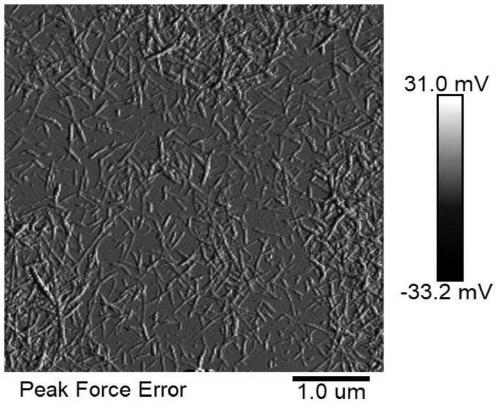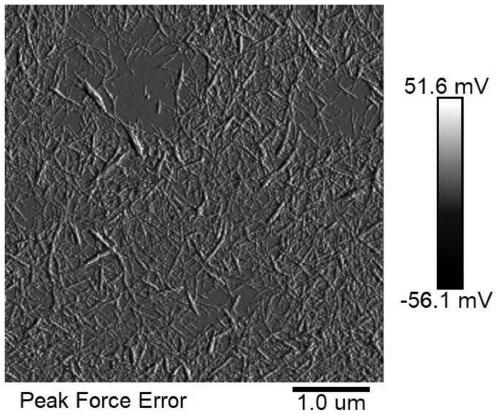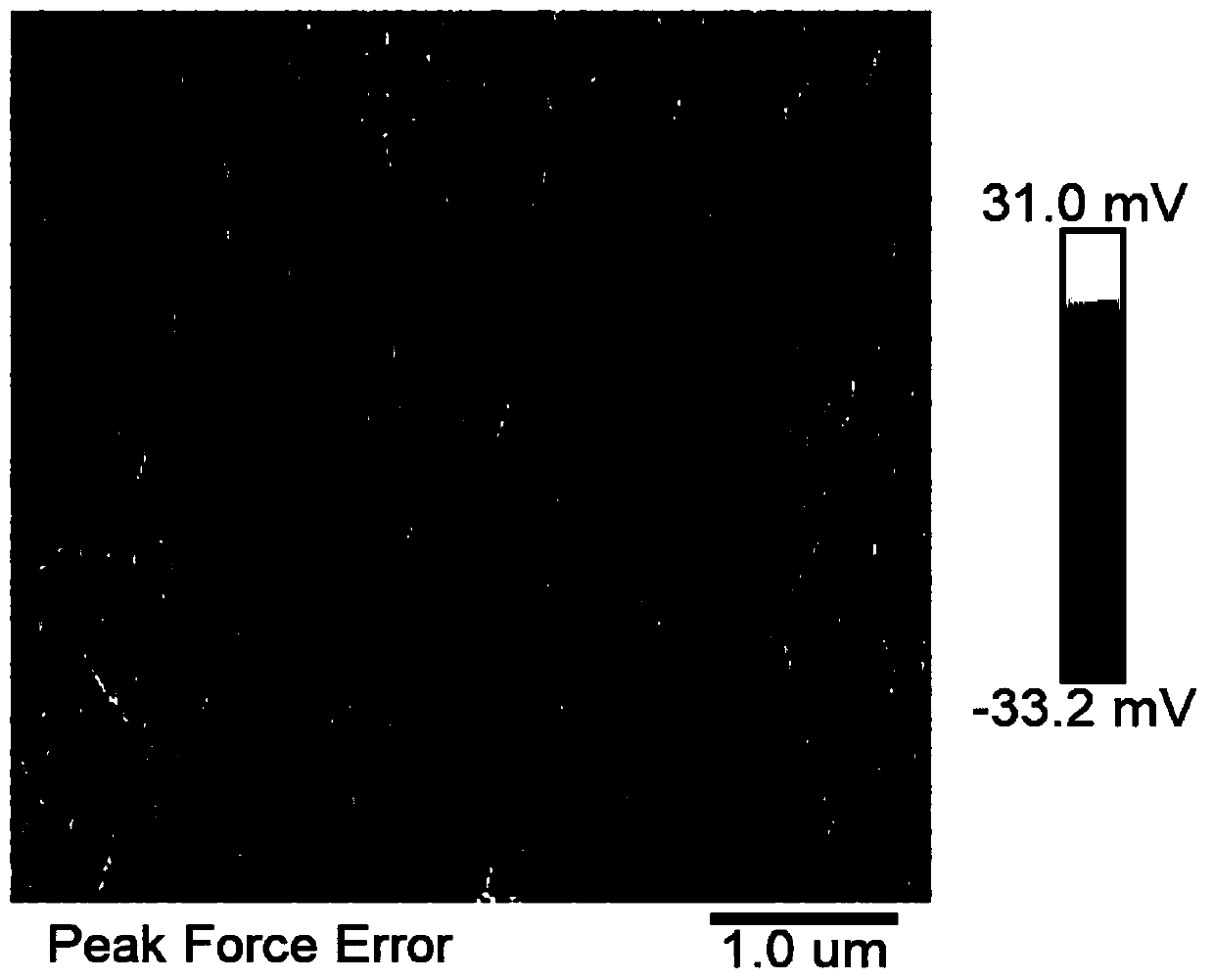Method for preparing carboxylated nanocellulose by utilizing citric acid hydrolysis in combination with ultrasonic assistance
A nanocellulose, ultrasonic-assisted technology is applied in the field of green preparation of nanocellulose to achieve the effects of reducing process and drug consumption, stable dispersion and high yield
- Summary
- Abstract
- Description
- Claims
- Application Information
AI Technical Summary
Problems solved by technology
Method used
Image
Examples
Embodiment 1
[0039] Example 1: Preparation of carboxylated nanocellulose by citric acid hydrolysis combined with ultrasound-assisted one-step method
[0040] (1) At a temperature of 100°C, 5g of dry bleached bagasse pulp board was pulverized and added to an aqueous citric acid solution (80g citric acid, 20ml deionized water) with a concentration of 80wt% for 4 hours to obtain a hydrolysis suspension.
[0041] (2) Vacuum filtration of the hydrolyzed suspension through a G4 sand core funnel to obtain solid fibers and filtrate. The fibers were repeatedly added with deionized water and centrifuged at 4000 r / min to wash until neutral, and the filtrate was subjected to rotary evaporation at 70 °C and 60 r / min to obtain a white citric acid crystalline solid.
[0042] (3) The washed fibers were sonicated at 900W for 20min by an ultrasonic cell crusher (there was a 5s interval after each 5s of sonication). After the sonication, 200ml of deionized water was added and sonicated for 20min.
[0043](4...
Embodiment 2
[0045] Example 2: Preparation of carboxylated nanocellulose by citric acid hydrolysis combined with ultrasound-assisted one-step method
[0046] (1) At a temperature of 100°C, add 5g of dry bleached bagasse pulp board to a citric acid aqueous solution (70g citric acid, 30ml water) with a concentration of 70wt% for 4h to obtain a hydrolysis suspension.
[0047] (2) Vacuum filtration of the hydrolyzed suspension through a G4 sand core funnel to obtain solid fibers and filtrate. The fibers were repeatedly added with deionized water and centrifuged at 4000 r / min to wash until neutral, and the filtrate was subjected to rotary evaporation at 70 °C and 60 r / min to obtain a white citric acid crystalline solid.
[0048] (3) The washed fibers were sonicated at 900W for 20min by an ultrasonic cell crusher (there was a 5s interval after each 5s of sonication). After the sonication, 200ml of deionized water was added and sonicated for 20min.
[0049] (4) After centrifuging the cellulose s...
Embodiment 3
[0051] Example 3: Hydrolysis of citric acid combined with ultrasonic-assisted one-step preparation of carboxylated nanocellulose
[0052] (1) At a temperature of 100°C, 5g of dry bleached wood pulp board was pulverized and added to an aqueous solution of citric acid (80g citric acid, 20ml water) with a concentration of 80wt% for 4h to obtain a hydrolysis suspension.
[0053] (2) Vacuum filtration of the hydrolyzed suspension through a G4 sand core funnel to obtain solid fibers and filtrate. The fibers were repeatedly added with deionized water and centrifuged at 4000 r / min to wash until neutral, and the filtrate was subjected to rotary evaporation at 70 °C and 60 r / min to obtain a white citric acid crystalline solid.
[0054] (3) The washed fibers were sonicated at 900W for 20min by an ultrasonic cell crusher (there was a 5s interval after each 5s of sonication). After the sonication, 200ml of deionized water was added and sonicated for 20min.
[0055] (4) After centrifuging ...
PUM
 Login to View More
Login to View More Abstract
Description
Claims
Application Information
 Login to View More
Login to View More - R&D
- Intellectual Property
- Life Sciences
- Materials
- Tech Scout
- Unparalleled Data Quality
- Higher Quality Content
- 60% Fewer Hallucinations
Browse by: Latest US Patents, China's latest patents, Technical Efficacy Thesaurus, Application Domain, Technology Topic, Popular Technical Reports.
© 2025 PatSnap. All rights reserved.Legal|Privacy policy|Modern Slavery Act Transparency Statement|Sitemap|About US| Contact US: help@patsnap.com



